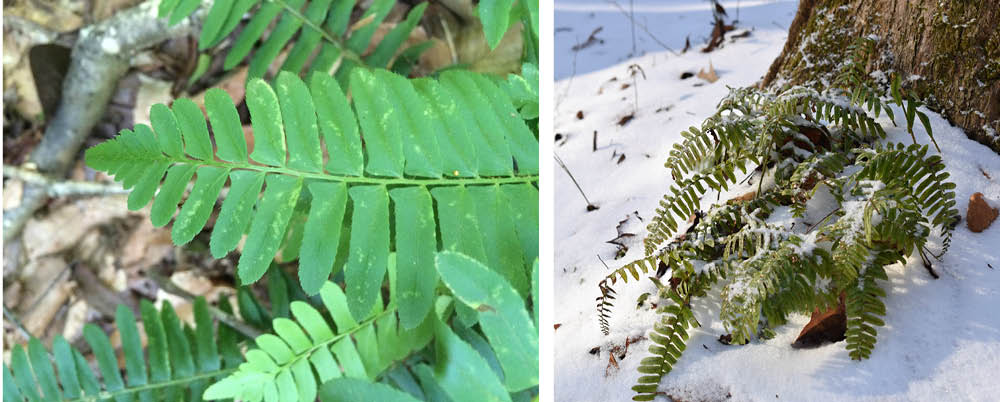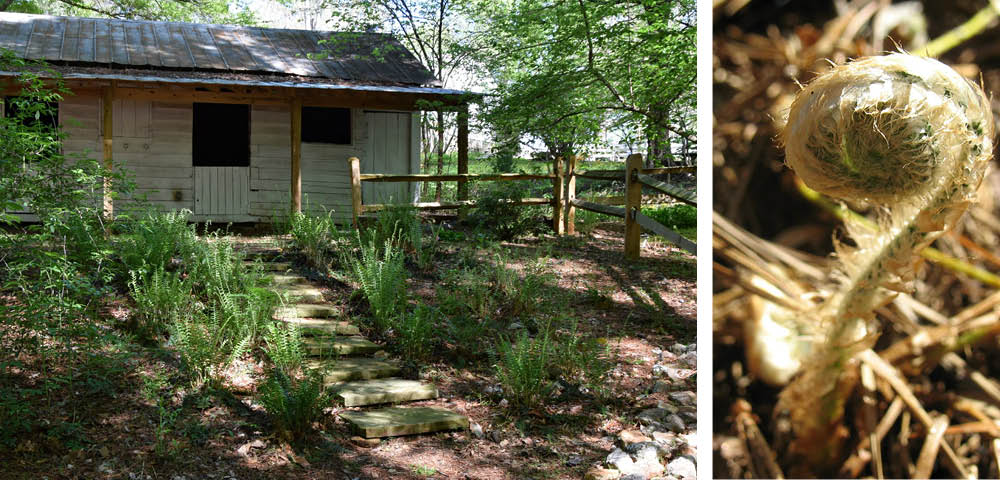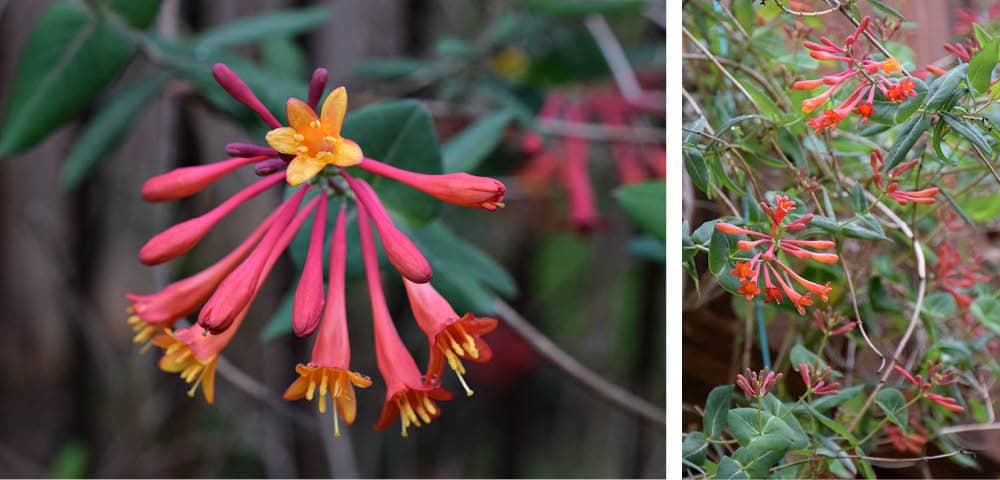President's Message
Melanie Bass Pollard
Kicking off the New Year together
It was four years ago that I attended my first GNPS educational meeting at the invitation of past-president and mentor Kathryn Gable, thus beginning my native plant “awakening” and transformation. I’ve loved the woods, trees and gardening since I was a little girl but I was unprepared for the explosion of knowledge that greeted me. It is with great enthusiasm as incoming GNPS president, that I welcome all members old and new, to celebrate the growing awareness of our Georgia native plants and the eco-systems to which they are fundamental.
The Georgia Native Plant Society celebrates its 25th year in 2019 so we have many new projects on the horizon – an update to our by-laws, and a move towards a governing state board with a dedicated strategic planning committee! Thank you all for the valiant efforts you have made to get us to our 25th anniversary and for all that you will be doing in the coming year.
We have many long-time volunteers who have given tirelessly to the Stone Mountain Propagation Center, Native Plant Sales, our signature Plant Rescue program, our 13 Restoration Sites (soon to be more!), our workshops and field trips held throughout the state, and our expanding Habitat Certification program, which is partnering with Atlanta Audubon to build an understanding of the importance of native plants and their significance to bird populations. It’s a stellar accomplishment for this organization to now have three statewide chapters comprised of almost 100% volunteer effort.
Along with this significant growth, we will see the Stone Mountain Propagation Center welcome its first staffed nursery manager. We also hope to see administrative staff support to help our volunteers spread their valuable knowledge throughout the state. This step is crucial to ensuring that the wisdom acquired through decades of plant knowledge is transferred to the next generation of gardeners and educators. This knowledge transfer is vital to our future and one of my primary goals as president.
Other goals for our 25th year are: Connecting Our Gateways- Birds, bugs, fauna, air, water, food, schools, municipalities, farmers and food are all dependent on native plants for life. By connecting with each of them we can ensure a flourishing future for Georgia’s native plants. Transferring Wisdom- Our organization has a vast knowledge that needs to be transferred to subsequent generations. Expanding our Reach- Through establishing new chapters, strengthening municipal and corporate awareness, and building new partnerships we can extend the knowledge and influence of GNPS to spread the importance of native plants. Strengthening our Core- Our strength is in our volunteer base. To enable volunteers to accomplish their goals, we must improve our technologies and workflow. We must document volunteer hours, define our goals, and clarify our strategies to present a well-unified organization.
Join with me in 2019 as I dedicate every ounce of my energy towards making this wonderful organization the best that it can be. Happy New Year Fellow Natives!
Chapter News: Coastal Plain
Gail Farley and Heather Brasell

Day in the Woods: Food table with cooked wild meat; Heather Brasell and her collection of lichens; marker alongside Center's butterfly trail.
Day in the Woods event
Heather Brasell, owner/manager of Gaskins Forest Education Center, announces annual ‘Day in the Woods’ event for Saturday, April 13 at 1 PM. This popular community event encourages people of all ages to enjoy many activities related to wildlife, forestry and crafts using natural resources. There are no fees. Heather insists all activities, including food tastings of grilled and smoked wild hog, deer, sausage, all be offered free of charge. Attached is a photo of the well-attended food table.
Last year more than 40 activities were offered by local artists and artisans, outdoor enthusiasts, biologists and Georgia forestry officials. The Coastal Plain Chapter handed out free native plants to visitors eager to learn more about natives.
Weather permitting, there will be a controlled burn demonstration. After a bring-your-own-cookout, visitors can enjoy a nature walk in the dusky woods and listen to birds and frogs. Then, if the skies are clear, guests can star gaze with astronomers.
Gaskin Forest Education Center’s address is 3359 Moore Sawmill Road, Alapaha, Georgia, 31622. Check out the Center’s Facebook page for more information and photos. If you have skills, knowledge and love of the outdoors to share with others, please contact Heather Brasell, heather.brasell@gmail.com, 229-339-3966. Heather Brasell is past president of Georgia Botanical Society and 1st Vice President of the Coastal Plain Chapter – GNPS.
Certificate in Native Plants (CNP) classes in Tifton, GA
Coastal Plain Chapter members in southwest Georgia are thrilled to learn that the State Botanical Garden of Georgia is bringing its popular Certificate in Native Plants (CNP) program to the Tifton area. Here’s an excerpt from the SBG Education Winter 2018-2019 Newsletter by Linda Chafin, Conservation Botanist and
Cora Keber, Director of Education:
The Certificate in Native Plants (CNP) has been one of the Education Department’s most successful adult programs, reaching professionals and lifelong learners alike. We extended the CNP model to coastal Georgia in 2010-2011, and created the Plants and Pollinators Specialization in 2018, and now, starting in January 2019, southwest Georgia will host the CNP program.
While statewide expansion of the CNP program has been in the thought process for a while, the push to make it a reality happened when a wonderful group of committed folks – educators, biologists, and naturalists from the Tifton area – approached the Garden in early 2018. Several of them had attended Certificate classes in Athens or Savannah and believed the time was right to offer the program in southwest Georgia. Not only does Tifton Certificate program fulfill a key part of our new Strategic Plan, it is an incredible opportunity to work with some really great “plant people” in one of the most ecologically diverse parts of Georgia.
The Tifton planning committee has designed a curriculum focused on the ecosystems of the Coastal Plain and has engaged local instructors who are experts in the plants, natural communities, and environmental concerns of that corner of the state. The program benefits from the many educational resources in the Tifton area, including UGA’s Tifton campus, the Abraham Baldwin Agricultural College, and the Gaskins Forest Education Center. Southwest Georgia’s natural resources are some of the richest in the state: longleaf pine forests, pitcherplant bogs, karst ponds, and mesic slope forests, to name a few plant communities harboring some of the greatest biodiversity in the southeastern US.
As with the Certificate program in Athens, the classes in Tifton will stress “wet feet and dirty hands” – experiential learning combined with lectures and lab exercises. Classes are open to anyone in the state with an interest in Coastal Plain ecology. To learn more about the program and to register for classes, contact the Garden’s Education Coordinator, Sean Cameron, at cscamero@uga.edu.
Coastal Plain Chapter members in the Tifton area should leap, jump, and sign-up for this rare opportunity ASAP! Members along the coast who took the course when it was offered in the Savannah area years ago, but who didn’t complete all the courses (that would be me, Gail Farley) can take classes in Tifton towards completion of the certificate. SBG has all the records of classes we took plus classes and field work we need. Some of us on the coast plan to carpool for the classes. The first class is January 19th on Identifying Trees & Shrubs in winter (elective). What a great way to start off the New Year. An electronic copy of the Certificate brochure is linked here. Sign up today if you can!
Plant Spotlight: Christmas fern
Ellen Honeycutt

A Christmas fern (Polystichum acrostichoides) frond and a plant showing its evergreen characteristic in winter.
Now that the deciduous leaves have all fallen, our native evergreen plants are looking especially attractive. Christmas fern (Polystichum acrostichoides) is a plant that I appreciate all during the winter months. It is found throughout Georgia, in areas of dry shade as well as on moist slopes near streams and creeks. So named for its evergreen presence during Christmastime, this large, clumping fern grows from tiny spores that are released from the dot-like sori on the back of the fertile fronds.
Christmas fern will stay green all winter until the new fronds begin to unfurl in March. The densely furry fiddleheads rise from the center of the clump, their golden hairs glinting in the spring sunshine. There is no need to cut off the old fronds; they will fade into the leaf litter as the new fronds spread out above them.
We often find Christmas fern on our plant rescues in the metro Atlanta area. They are easily transplanted and do well in their new homes if placed in part-shade and adequately watered the first year. I like to use them to define an informal path; I have seen other people use them to stabilize slopes where English ivy was removed.

Left: McFarlane Nature Park (where we have our spring plant sale) illustrates how Christmas ferns can be used in a designed landscape. Right: An unfurling frond.
As you walk about through natural areas this winter, keep an eye out for its presence in the woods. It is generally left alone by deer, although sometimes they will rest on it. Our members recognized the potential of this underutilized native perennial when they chose it for the GNPS Plant of the Year in 2008. Perhaps you might find a home for it in your landscape this year.
2019 Plant of the Year: Coral Honeysuckle
Valerie Boss

The 2019 GNPS Plant of the Year, Coral Honeysuckle (Lonicera sempervirens).
The Georgia Native Plant Society is pleased to announce that coral honeysuckle (Lonicera sempervirens) has been selected as Plant of the Year for 2019. This year marks the program’s twentieth anniversary. Previous selections have included one fern, six trees, five shrubs, and seven herbaceous perennials. Now, for the first time, a vine is getting its day in the sun.
Coral honeysuckle, also known as trumpet honeysuckle or woodbine, is a woody vine that grows naturally along roadsides, forest margins, and in open spaces within the woodland understory. It typically creeps along the ground and twines counterclockwise, weaving its way up and over small shrubs, fences, and trellises, as well as old-fashioned metal mailbox posts; hence the nickname, “mailbox vine.” Unlike the ubiquitously invasive Japanese honeysuckle (L. japonica), coral honeysuckle is not a tree climber; its stems can’t twine around large trunks. It also tends to be shorter, generally reaching a maximum length of about 20 ft.
At maturity, the leaves are 1-3 inches long, elliptical or ovoid, and blue-green, with pale undersides and smooth edges that may curl under slightly. The leaves stay green well into the fall, which may explain the Latin misnomer “sempervirens,” meaning evergreen, although the plant is actually deciduous. New spring foliage has a purplish tinge, with a pronounced under-curl at the leaf margins, making the plant easy to distinguish from other vines. Leaves are opposite and distinct, except for the terminal pair, which is fused.
In April, when the leaves are still immature, a short stem, topped by a cluster of six pinkish flower buds at a single node, can form to perfuse the terminal leaf pair. As the stem grows, the buds elongate into six closed tubes, each formed from five united petals, which stick out like spokes from the stem. When they reach 1.5-2 inches long, the tubes open, to stunning effect. Each tubular blossom is vivid scarlet on the outside, with a small, bright green calyx at its base. The inner throat flares out, terminating in five lobes. Five stamens and pistils protrude beyond the flower’s throat. Anthers at the tips of the stamens are covered in pollen, while the pistils have flat discs at the ends. All of the inner parts, even the pollen, are a bright golden yellow.
Flower stems continue to elongate throughout the spring and into summer, forming additional nodes and flower clusters, with the most mature blooms found closest to the leaves. A stem can sometimes twist as it grows, making the inflorescence look whorled. As the flowers mature and fall off, berries appear, ripening from green to yellow to red. Meanwhile, the plant continues to produce new growth. Throughout late spring and early summer, an individual vine might produce berries, new leaves, and flowers, all at the same time.
Coral honeysuckle’s flowers are a rich source of nectar. Hummingbirds — particularly ruby-throated hummingbirds — love to feed on them and are key pollinators. The flowers are also visited by moths, butterflies, and some bumblebees, but not honeybees. Several caterpillar species feed on the vine’s leaves, including the Spring Azure butterfly, the Snowberry Clearwing moth, and the Hummingbird Clearwing moth. Birds are also attracted to the plant, feeding on its berries.
For the most part, people use coral honeysuckle primarily as an ornamental plant. There is not a strong tradition of nutritional or medicinal use, and the species is absent from the current herbal pharmacopeia. Native Americans once used indigenous honeysuckles in remedies for coughs and lung ailments. Coral honeysuckle was likely used in this manner; however, it is difficult to say for sure because the plant’s old colloquial name “woodbine” also refers to other native honeysuckle species (as well as Virginia creeper). Honeysuckles were also used to treat bee stings [1].
Europeans first identified coral honeysuckle during the early colonial period. John Tradescant the Younger, gardener to King Charles I, introduced the plant to England from Virginia in the 1600s [2]. William Bartram, the first American artist-naturalist — famous for exploring north Georgia along what we now know as the Bartram Trail — was familiar with the species. A coral honeysuckle flower graces the top corner of one of his drawings. It can be seen in collection of his works from 1756-1788 [3].
Coral honeysuckle is a wonderful garden plant. It can be propagated from either seeds or cuttings. Put it in decent soil — it won’t do well in clay, give it a trellis or other support for climbing, and water until it is established. After that, it is fairly low maintenance. To encourage flowering, plant it where it gets plenty of sunlight, don’t over-fertilize, and prune immediately after flowering to encourage re-growth — it blooms on new wood. The result can be outstanding. A mature coral honeysuckle in full flower is a sight to behold.
- J. K. Crellin, Jane Philpott, A. L. Tommie Bass (1990) Herbal Medicine Past and Present: A reference guide to medicinal plants. Duke University Press. Durham and London. pp. 246-7.
- Kew Science online: powo.science.kew.org/taxon/urn:lsid:ipni.org:names:30080890-2
- W. Bartram (1968) Botanical and zoological drawings, 1756-1788: reproduced from the Fothergill album in the British Museum (Natural History). Memoirs of the American Philosophical Society. Philadelphia. Vol 74, p. 247.
Upcoming landscaping workshop
GNPS is proud to co-sponsor an upcoming workshop from New Directions in the American Landscape (NDAL), a PA certified nonprofit founded in 1990 by Larry Weaner. The Natural Landscape Design Workshop will be held on March 7-8, 2019 at the Fernbank Museum of Natural History in Atlanta. A full brochure will be provided to members in the near future, but visit their site for more information. Here is a taste of what the workshop will offer:
Demand for high performing, ecologically beneficial landscapes are increasing faster than the availability of the specialized knowledge needed to achieve them. This intensive two-day workshop will provide concrete, real world guidance for designing and documenting all phases of native landscape development.
Attendees will receive an extensive in depth manual that documents all aspects of the program including plant selection criteria, plant recommendations, ecological process-based management specifications, and guidance for maximizing the aesthetic and experiential appeal these landscapes can provide.

|